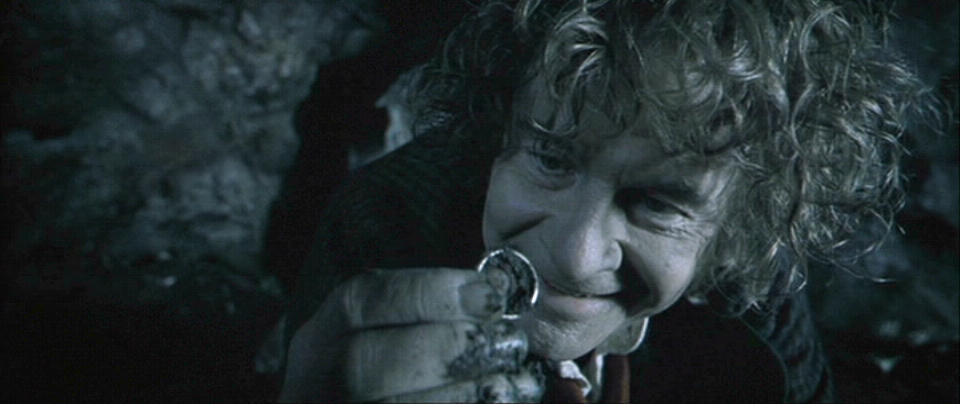The Two Towers by J.R.R Tolkien (Harper Collins 1991, 2007) pp.866-871
When I think of Peter Jackson’s version of Faramir I think of the speech that Elrond makes to Gandalf in Rivendell before the Council.
“Men are weak. The race of Men is failing. The blood of Númenor is all but spent, its pride and dignity forgotten. It is because of Men the Ring survives.”
And then I think of the scene in which Faramir takes Frodo, Sam and the Ring towards Minas Tirith in an almost trance like state, seemingly overcome by the Ring’s malignant power.
What a contrast all this is to the man that we meet for the first time within the pages of The Two Towers.

I have been enjoying using this image of Faramir as created by Anke Eissman in the last few weeks. Compare it to David Wenham’s characterisation as illustrated below.
Sam awakes from sleep to find Frodo standing before Faramir and a company of about three hundred men. Faramir interrogating him and it feels as if a trial is taking place. We are told that Sam “could see Faramir’s face, which was now unmasked; it was stern and commanding, and a keen wit lay behind his searching glance.” Later on we hear Frodo’s assessment of the man before he stands, that he was very much like Boromir in looks but “a man less self-regarding, both sterner and wiser.” And later still we read Éowyn’s first assessment of Faramir that she could see “the grave tenderness in his eyes, and yet knew, for she was bred among men of war, that here was one whom no Rider of the Mark would outmatch in battle.” This does not put Éowyn off.
I do not blame David Wenham for the way in which he plays the part of Faramir in Peter Jackson’s films. He does it as was asked of him, as an embodiment of the weakness that Jackson’s Elrond speaks of. In Jackson’s films, rightly celebrated as a cinematic masterpiece even after twenty years, one of the major themes, alongside that of friendship, is power and weakness. The Ring is all-powerful and constantly exerts that power in its immediate and utterly malignant influence over any, Frodo for the most part excepted, who see it. In the scene in which Elrond speaks of human weakness we see Isildur fall immediately under its spell and refusing to destroy it in the fires of Orodruin. “It is because of Men that the Ring survives.”

David Wenham as Faramir and Elijah Wood as Frodo. I can’t quite believe that Wenham’s character is one that a woman like Éowyn would fall in love with. Now Viggo Mortensen’s Aragorn is a different matter entirely!
Contrast this characterisation of Men with the one that Tolkien gives us. Pride and dignity are not spent. Aragorn is not in exile in the North by choice but because it is the land of his birth. Although he is Isildur’s heir he will need to prove that claim in Minas Tirith and there is considerable doubt that his claim will be accepted. Denethor, the Lord of Gondor, is both proud and dignified, and although we will find him cast down by grief over the loss of Boromir, he is not self-indulgent as Jackson portrays him, eating a hearty meal as Faramir risks all in battle, but austere and self-possessed until the end when overcome with despair.
And Faramir is far better portrayed in the work of Anke Eissman than by David Wenham’s and Peter Jackson’s characterisation. When I look at Eissman’s Faramir, sitting before Frodo, in complete command of the situation, I can see the man that Éowyn will first of all respect and later on fall in love with.
St Paul has a word that describes Faramir perfectly and thar is prautes, a word that he uses in speaking of the fruit of the Holy Spirit in his letter to the Galatians (5.22,23). In most translations this is usually rendered as gentleness but this is only a part of the story. Gentleness is all too often mistaken for weakness, a mistake that Êowyn does not fall prey to when she perceives Faramir’s “grave tenderness” but realises that he is one who few could outmatch in battle. In fact Éowyn understands prautes perfectly. It is a subtle mingling of strength and gentleness and Faramir is a fine, even exemplary expression of the word. He was one of Tolkien’s favourite creations and the weeks that we will spend in his company will refresh both the hobbits and I hope, my readers as well.

Anke Eissman depicts the first time that Faramir and Éowyn meet. There is a lot of thinking going on!























